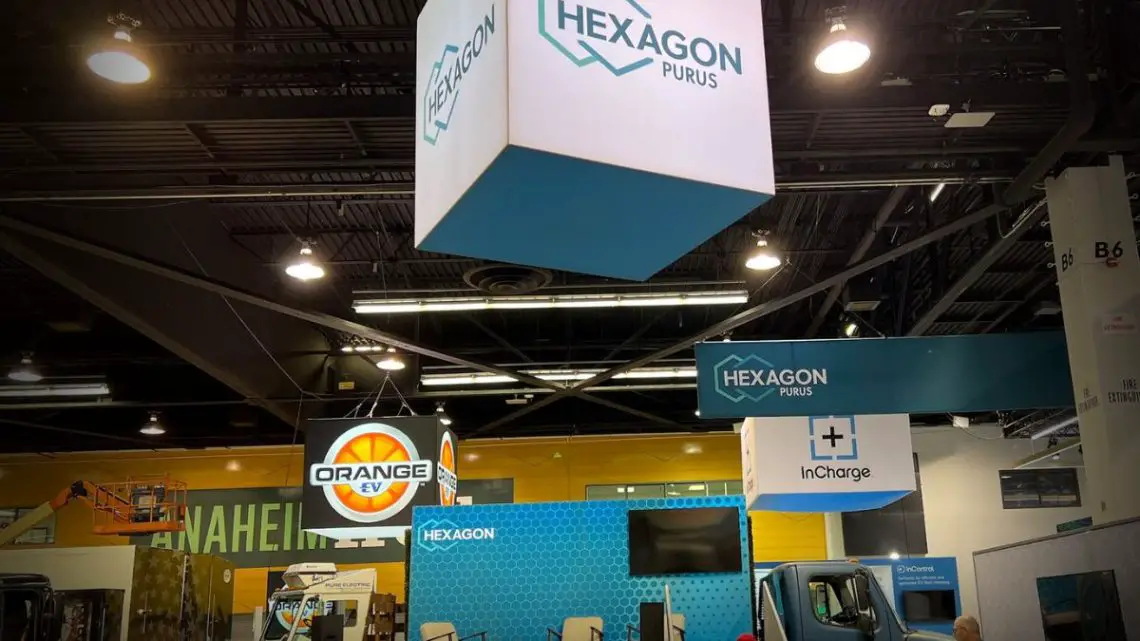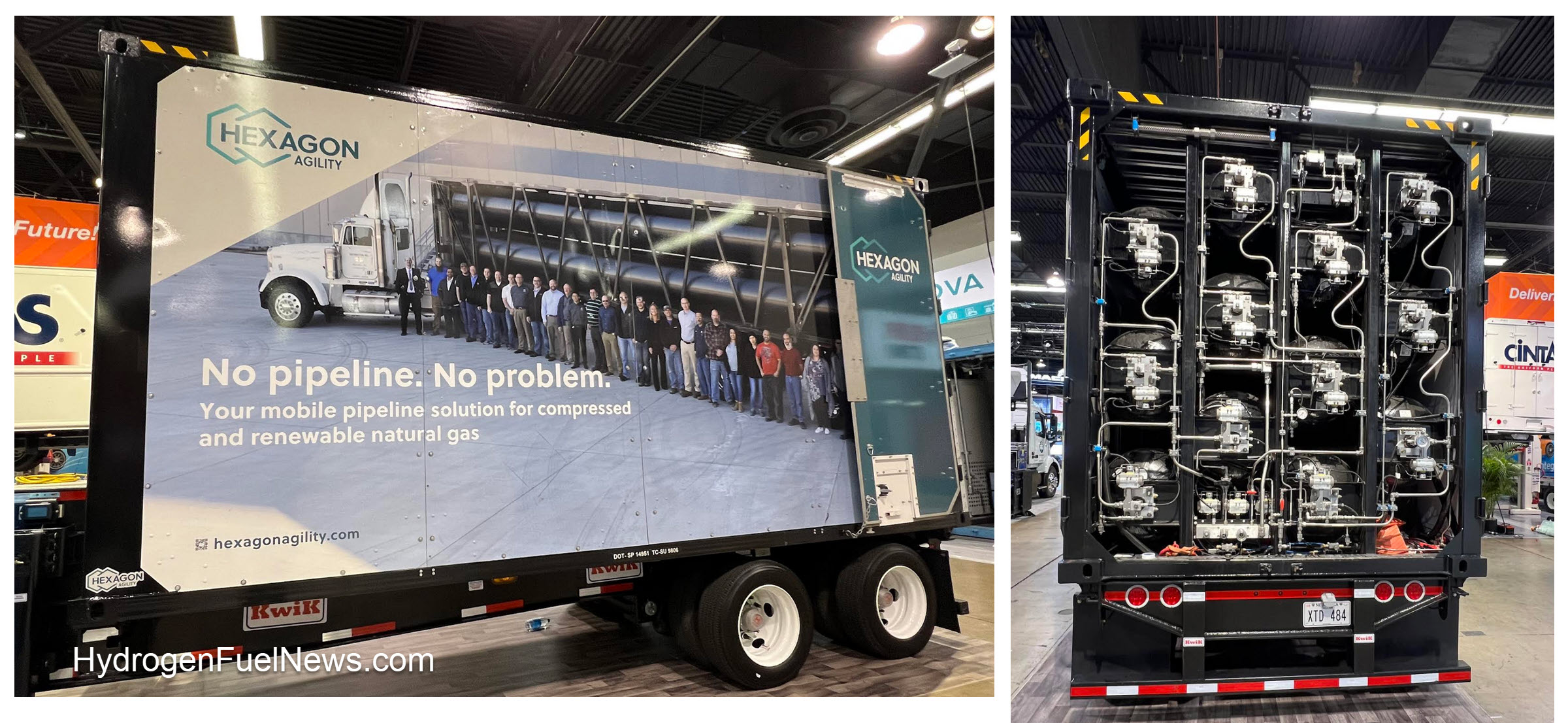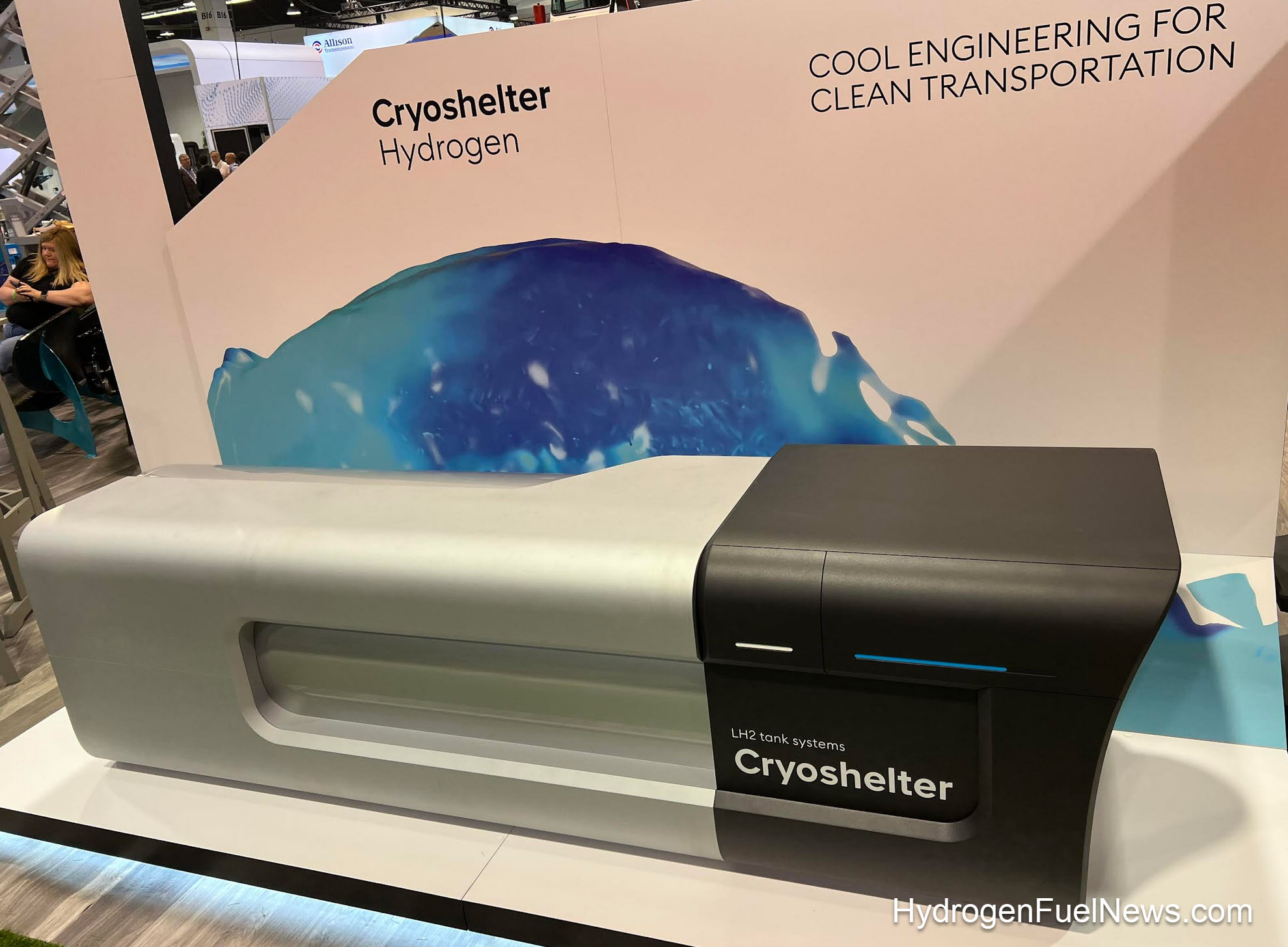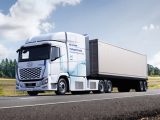
Hexagon Purus’ Todd Sloan on the Future of Hydrogen: An Exclusive Interview with Hydrogen Fuel News
May 3, 2023HFN was at the ACT Expo’s Hydrogen Workshop in Anaheim, CA
Hydrogen Fuel News was live at the Advanced Clean Transportation (ACT) Expo in Anaheim California, where we spoke with Todd Sloan the Executive Vice President of Systems at Hexagon Purus, on the subject of hydrogen fuel cell trucks and where the industry is headed in coming years.
Hexagon Purus provides key technologies in zero-emission mobility.
Hexagon Purus is working with companies such as Nikola, UPS, Hino, Toyota, and others pursuing zero-emission solutions including battery electric vehicles (BEVs) and fuel cell electric vehicles (FCEVs).
Sloan explained that the Hexagon perspective on the future of zero emission isn’t a matter of either battery electric or fuel cell technology. Instead, both will play integral roles in various applications in coming years and decades.
“As we go forward, this is all focused on zero-emission, both battery electric and fuel cell electric full vehicle integration,” said Sloan.

What is Hexagon’s role in the hydrogen fuel cell truck market?
“We’re the world’s largest manufacturer of compressed gas hydrogen tanks,” Sloan explained, adding that the same way some trucks are currently outfitted with compressed natural gas tanks, his company provides compressed-hydrogen tanks. “We also do liquid hydrogen tanks…that will be coming out in about three years.”
“On the hydrogen storage side, we’ve got all technologies covered. On the vehicle integration side, we’re building seven fuel cell trucks this year with various OEMs.” Sloan was unable to name those specific OEMs as Hexagon’s official announcement of the partnerships had not yet been made. “Four different models, seven trucks.”
“We have unveiled that we’re with Toyota, so Toyota provides a fuel cell kit with our hydrogen system, with our battery pack, the Toyota fuel cell, and that gets bundled up into a kit to OEMs that would then build the fuel cell truck.”
What is your outlook on the zero-emission truck market?
“It’s very positive but only for practical applications. We can’t do this without government funding, just like we couldn’t get natural gas off the ground without government funding. We prefer to focus right now on the BEV side for applications that come back and triple charge at night while infrastructure gets put in place, which will take many years.”
What about hydrogen fuel cell technology?
“On the hydrogen front, this is where it starts to get interesting, because once you get up over 300

Todd Sloan, EVP Systems – Image Credit: Hexagon Purus
miles, it just really pencils out nicely in a couple of years. But it’s going to take a couple more years for the cost of our hydrogen systems to come down, the cost of the fuel cell to come down, and we need a bit of scale to make that happen. And we need time to get hydrogen infrastructure in place. But it’s happening. You can see it happening.
“My first business plan in the year 2000 was all about hydrogen, but then natural gas really was what got us all the experience. We’ve built close to 100,000 trucks now in the last twenty-plus years, for experience putting big heavy energy storage on board, working with fleets, working with customers, and understanding their needs. We’ve taken a lot of that learning and have now applied it to BEV and FCEV applications.”
Do you think hydrogen will be taking off within the next three years?
“I think within the next three years, you’ll start to see meaningful amounts of vehicles on the road. I mean, high hundreds, low thousands. We’ll really start to see infrastructure starting to get set up well. It’s one of the beauties of hydrogen. You can fill a class-A truck in 15 minutes. You can’t do that with electric.
“For us right now, with funding for fuel cell trucks, you can get it to pencil out quite well if you have access to hydrogen, if you can get hydrogen distribution in place.”
Is it something we’ll see a lot more of in the next three years?
“Without a doubt.”
What is Hexagon’s role?
 “Enabling new technology just like [Hexagon] Agility did twenty years ago. Natural gas was hard to get off the ground. OEMs were kicking and fighting on that gas, so we went and started working with end users, enabled the technology that they could use. We’re doing the same thing now. We’re here to help OEMs and customers integrate zero-emission solutions.
“Enabling new technology just like [Hexagon] Agility did twenty years ago. Natural gas was hard to get off the ground. OEMs were kicking and fighting on that gas, so we went and started working with end users, enabled the technology that they could use. We’re doing the same thing now. We’re here to help OEMs and customers integrate zero-emission solutions.
“Nobody really knows what the next 10 years looks like, which one’s going to win out, or how technology is going to change. We have predictions. We have our own opinions on that. This is why we’re trying to do both BEV and FCEV. They both have applications. The industry needs them both. There’s no way one technology is going to work over the other for all applications. You need everything.
“We’re here understanding and learning like everyone how best to deploy the technology, then be there to support the customers and the fleets as they go from dozens to hundreds to thousands. Again, it’s a lot like natural gas ten years ago. It’s going to be the same thing in this industry.”
We will be following up with them soon – There’s defiantly more to Hexagon Purus than meets the eye!




 With over 15 years of reporting hydrogen news, we are your premier source for the latest updates and insights in hydrogen and renewable energy.
With over 15 years of reporting hydrogen news, we are your premier source for the latest updates and insights in hydrogen and renewable energy.